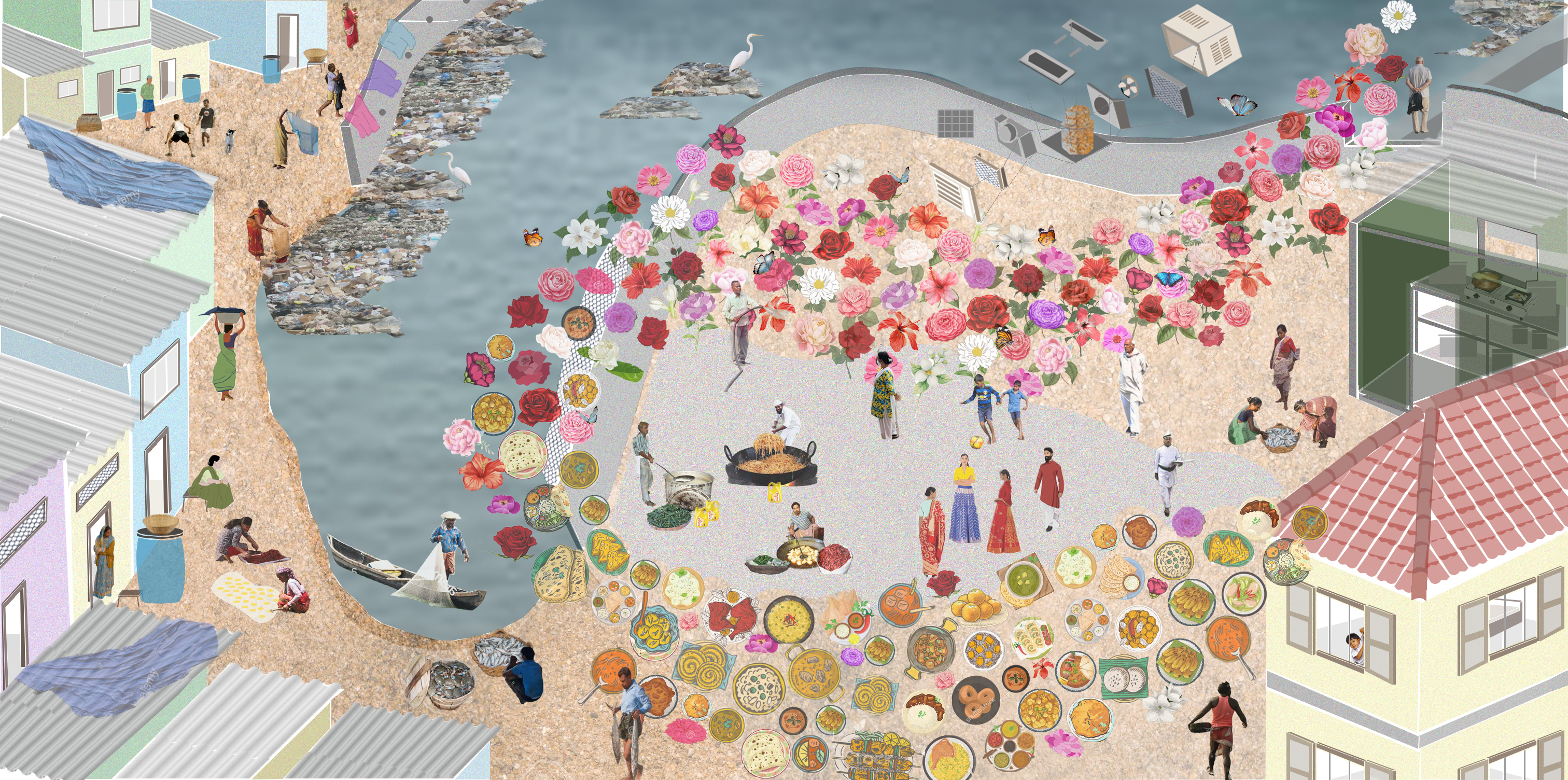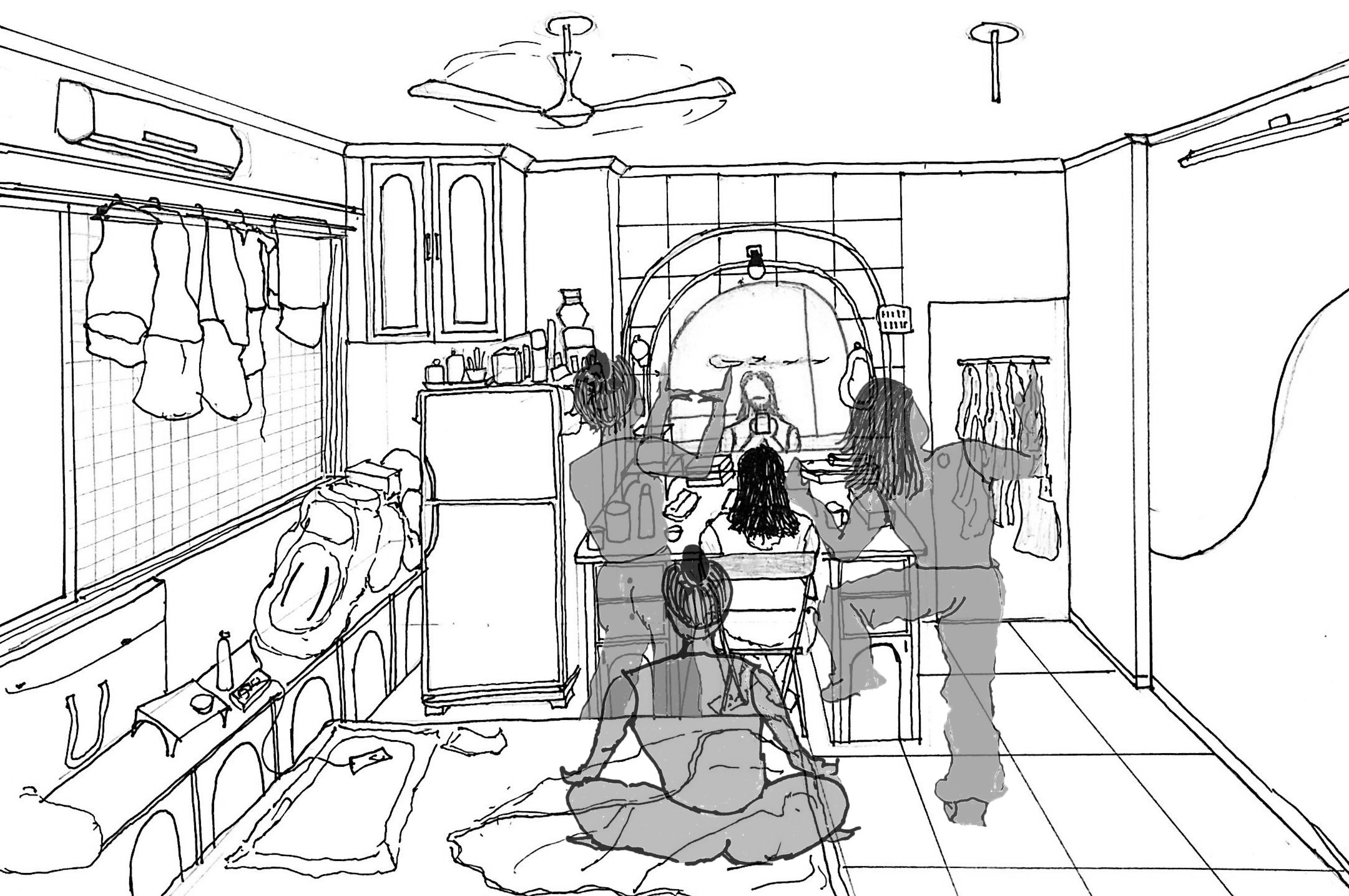The research aims to engage and build on the individual’s relationship with the everyday environment by actively engaging with it. Here the environment is understood as an external entity formed of intensified extreme conditions emerging mainly due to human interventions but layered with the non-human phenomenon like air, light and water. This environment making can be seen as a web formed through the transfer of forces and energies from one body to the other in linear or nonlinear ways. These everyday extreme environment conditions are in general the unwanted, undesired conditions and demand their dislocation or disappearance from the cities. The research engages in questioning this bourgeois environmentalism by drawing careful attention of the students to the life and living conditions (human-non-human) that are generated through or transgresses these environments. This attention drawing is seen as a crafted journey for engaging with the sites of and formed through overlapping of different intensities of life and living conditions. These sites, more seen as events here having everyday participatory engagement are characterized by the life in and around it, bio-social processes that are learnt or observed here. The choreographed journey includes the cognitive as well as the affective components that are demonstrated as different ideas of care.
Care in general means the process of protecting someone or something and providing what the person or the thing needs. But here, through lived experiences it is expanded to annotate care as admiration, ignorance, calmness, confusion, fear, nostalgia, disgust, confusion, amusement, anger, anxiety, awkwardness. To be able to arrive at care as environment (as deed) more than care of environment (of need) and explore the practices of care, the studio will necessarily think of the environment beyond the literal empiricism and scientism.
This research is conducted as a part of a 4 week vertical studio each year with a group of 12 students and has undergone three phases between 2020-2022. In the first year the focus was around building narratives of objects as the beings of everyday life like the street wall, photo frame, white board, moss etc in one's neighborhood. These personified beings talked about how they participate to craft everydayness knowingly or unknowingly. The next year's attention drawing was seen as a crafted journey for engaging with the intense sites like a nullah, garbage heaps, construction sites, busy traffic road, debris, parking lots etc, something that dominated the site environment by its presence. The third phase of the project expanded to understand the intensities of overlapping environments at the scale of the city. The studio centrally asked the question ‘What is a Forest?’ and dwelled into reading the human- non human life forms that emerge at the edges of the administrative boundaries of the Sanjay Gandhi National Park in Mumbai.


